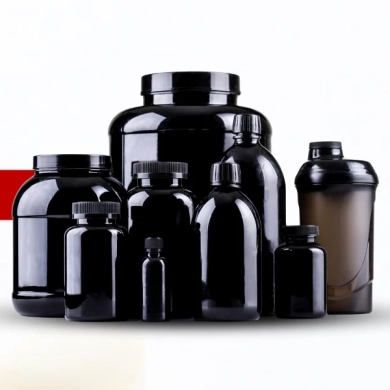5 Exercises to Maximize Muscle Growth and Hormonal Balance
Achieving muscle growth while balancing your hormones is no small feat. Your body is an intricate system, and exercise plays a key role in optimizing both muscular development and hormonal health. The right workout routine not only builds strength and endurance but also promotes a healthy hormone profile. From regulating testosterone and growth hormone to lowering cortisol, exercise can help balance your internal environment, resulting in better muscle gains, improved mood, and overall well-being. Let’s dive into the five best exercises that maximize muscle growth and hormonal balance, so you can start reaping these rewards today.
The Link Between Muscle Growth and Hormonal Balance
Before discussing specific exercises, it’s essential to understand the relationship between muscle growth and hormones. Hormones such as testosterone, growth hormone (GH), and insulin-like growth factor 1 (IGF-1) are anabolic, meaning they promote muscle tissue growth. On the other hand, cortisol, a catabolic hormone, can break down muscle tissue when present in high levels.
A well-structured exercise program encourages the release of anabolic hormones while controlling cortisol levels, thus leading to better muscle development and fat loss. The key is selecting exercises that trigger maximum hormone response and create an optimal environment for muscle growth.
Why Compound Movements Are Key for Hormonal Balance
One of the most important elements for hormone optimization during exercise is to focus on compound movements—exercises that involve multiple joints and muscle groups. These types of exercises place a significant demand on your body, encouraging the release of testosterone and growth hormone. Compound movements also engage more muscle fibers, which leads to greater overall muscle growth compared to isolation exercises.
Without further ado, here are the top five exercises that maximize muscle growth and hormonal balance.
Squats: The King of Lower Body Exercises
Squats are one of the most effective exercises for building overall muscle mass, particularly in the lower body. As a compound movement, squats activate several large muscle groups, including the quadriceps, hamstrings, glutes, and even the core.
How Squats Affect Hormones
Due to the intensity of squatting, your body releases a significant amount of testosterone and growth hormone. The heavy loads you lift during squats stimulate the release of these anabolic hormones, aiding in both muscle growth and fat loss. In addition, squats also improve insulin sensitivity, which can help regulate blood sugar levels—a key factor in hormonal balance.
Benefits of Squats
- Increased lower body strength
- Enhanced core stability
- Boost in anabolic hormone production
- Improved balance and coordination
How to Perform Squats Correctly
- Stand with your feet shoulder-width apart.
- Lower your hips back and down, keeping your chest up.
- Go as low as your flexibility allows, ideally until your thighs are parallel to the ground.
- Push through your heels to stand back up.
- Perform 3-4 sets of 8-12 repetitions.
Deadlifts: The Ultimate Full-Body Workout
Deadlifts are another powerhouse when it comes to building muscle and optimizing hormone production. This exercise works your hamstrings, glutes, lower back, traps, and even your core. Deadlifts not only build strength but also improve posture and flexibility.
Hormonal Impact of Deadlifts
Because deadlifts involve such a large range of motion and activate multiple muscle groups, they trigger a substantial release of both testosterone and growth hormone. In addition, deadlifts can help reduce the levels of cortisol by improving your body’s overall stress response, especially when performed regularly with proper recovery.
Benefits of Deadlifts
- Strengthens the posterior chain
- Enhances core stability
- Promotes hormone release for muscle growth
- Improves posture and reduces back pain
How to Perform Deadlifts Correctly
- Stand with your feet hip-width apart, with the barbell in front of you.
- Bend at the hips and knees, keeping your back straight, and grasp the barbell.
- Drive through your heels as you lift the barbell, keeping the bar close to your shins.
- Stand tall, locking your hips and knees at the top.
- Perform 3-4 sets of 6-10 repetitions for optimal results.
Bench Press: For Upper Body Strength and Hormonal Boost
The bench press is a classic upper body exercise that primarily targets the pectorals, shoulders, and triceps. It’s another compound movement, which means it’s great for stimulating multiple muscle groups and promoting overall muscle growth.
Hormonal Effects of Bench Pressing
Similar to squats and deadlifts, the bench press can trigger an increase in testosterone and growth hormone, especially when performed with heavy weights. The bench press also supports upper body hypertrophy, helping you develop a balanced physique and healthy hormonal environment.
Benefits of Bench Pressing
- Builds strong chest, shoulders, and triceps
- Boosts upper body power
- Enhances hormone production for muscle growth
- Improves overall muscular balance
How to Perform the Bench Press Correctly
- Lie flat on a bench, with your feet firmly on the ground.
- Grasp the barbell with your hands slightly wider than shoulder-width apart.
- Lower the bar to your chest, maintaining control.
- Press the bar back up to full extension, focusing on squeezing your chest muscles.
- Perform 3-4 sets of 8-12 repetitions.
Pull-Ups: Boosting Strength and Hormonal Response
Pull-ups are a bodyweight exercise that can greatly improve upper body strength, targeting the back, shoulders, biceps, and forearms. They are one of the most efficient ways to build muscle without needing much equipment, making them accessible for almost anyone.
Hormonal Benefits of Pull-Ups
Pull-ups demand significant effort from large muscle groups, encouraging the release of testosterone and growth hormone. Additionally, because pull-ups are a challenging bodyweight movement, they help improve insulin sensitivity, contributing to better overall hormonal balance.
Benefits of Pull-Ups
- Builds a strong back, arms, and shoulders
- Enhances grip strength
- Stimulates hormone production
- Supports muscle endurance and stability
How to Perform Pull-Ups Correctly
- Grasp a pull-up bar with your hands slightly wider than shoulder-width apart.
- Engage your core and pull your body upwards until your chin is above the bar.
- Lower yourself down in a controlled manner.
- If you cannot do a full pull-up, start with assisted variations or use resistance bands.
- Aim for 3-4 sets of 6-10 repetitions.
Overhead Press: Building Strong Shoulders and Hormonal Balance
The overhead press is an essential movement for building strong shoulders, triceps, and core stability. By lifting a barbell or dumbbells over your head, you engage several upper body muscles, making it a fantastic exercise for both muscle growth and hormone optimization.
Hormonal Impact of the Overhead Press
Lifting heavy objects overhead stimulates a significant hormonal response, particularly the release of growth hormone and testosterone. The overhead press also enhances core engagement, helping to improve your posture and metabolic rate—both crucial for maintaining hormonal balance.
Benefits of the Overhead Press
- Strengthens shoulders and upper back
- Improves core stability
- Promotes anabolic hormone release
- Boosts functional strength
How to Perform the Overhead Press Correctly
- Stand with your feet shoulder-width apart and hold a barbell or dumbbells at shoulder height.
- Press the weight directly above your head, extending your arms fully.
- Lower the weight back to shoulder height with control.
- Perform 3-4 sets of 6-10 repetitions.
Conclusion
When it comes to maximizing muscle growth and achieving hormonal balance, these five exercises—squats, deadlifts, bench presses, pull-ups, and overhead presses—stand out as the most effective. By incorporating these compound movements into your workout routine, you’ll not only build more muscle but also promote the optimal release of anabolic hormones like testosterone and growth hormone. This will lead to better fat loss, improved insulin sensitivity, and an overall healthier hormonal profile. Remember, consistency is key. Over time, these exercises will help you build a balanced, strong, and healthy body.
FAQs
What role do hormones play in muscle growth?
Hormones like testosterone, growth hormone, and IGF-1 promote muscle growth, while cortisol can break down muscle tissue. Proper exercise helps regulate these hormones for better gains.
Are compound exercises better for hormonal balance?
Yes, compound exercises like squats, deadlifts, and bench presses engage large muscle groups, triggering the release of anabolic hormones that support muscle growth and fat loss.
How often should I perform these exercises?
For best results, aim to perform these exercises 2-3 times per week, allowing at least 48 hours of rest between sessions targeting the same muscle groups.
Can I still build muscle with bodyweight exercises?
Yes, exercises like pull-ups are highly effective for building muscle and promoting hormone release, especially when performed with proper form and intensity.
How do deadlifts improve posture?
Deadlifts strengthen the posterior chain muscles, including the lower back, glutes, and hamstrings, which support proper posture and reduce the risk of lower back pain.
Is it okay to lift heavy weights to boost hormone levels?
Lifting heavy weights is a great way to stimulate hormone production, but it’s important to use proper form and avoid overtraining to prevent injury and excessive cortisol release.









Add comment